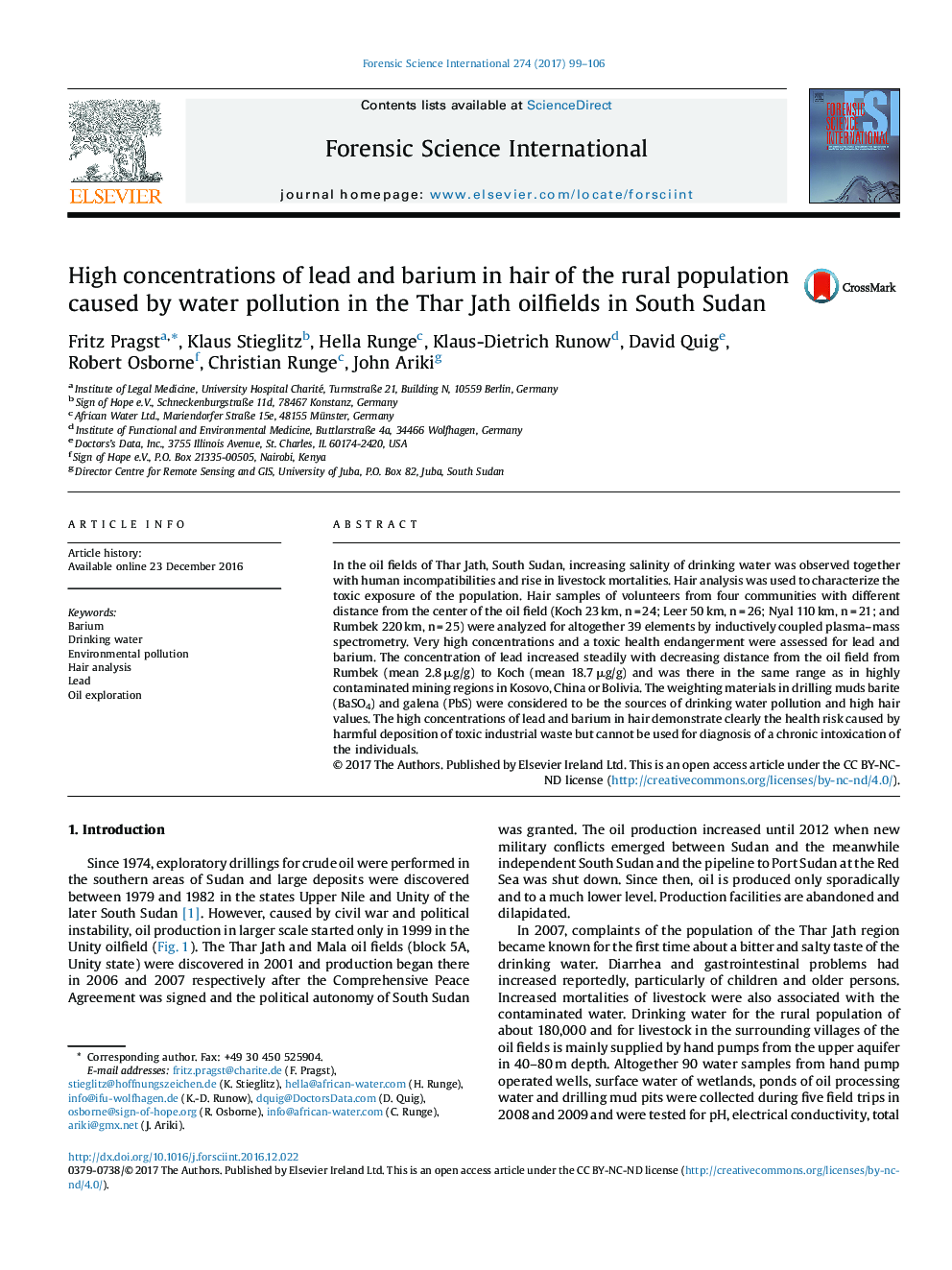| Article ID | Journal | Published Year | Pages | File Type |
|---|---|---|---|---|
| 6462503 | Forensic Science International | 2017 | 8 Pages |
â¢Hair samples from four locations in South Sudan were analyzed for toxic metals.â¢High concentrations of Pb and Ba were detected near the Thar Jath oilfields.â¢Badly disposed drilling mud and produced water cause health endangering exposure.â¢Contamination of groundwater is the essential way of pollutant distribution.â¢Hair analysis proves toxic exposure to Pb and Ba but not chronic intoxication.
In the oil fields of Thar Jath, South Sudan, increasing salinity of drinking water was observed together with human incompatibilities and rise in livestock mortalities. Hair analysis was used to characterize the toxic exposure of the population. Hair samples of volunteers from four communities with different distance from the center of the oil field (Koch 23 km, n = 24; Leer 50 km, n = 26; Nyal 110 km, n = 21; and Rumbek 220 km, n = 25) were analyzed for altogether 39 elements by inductively coupled plasma-mass spectrometry. Very high concentrations and a toxic health endangerment were assessed for lead and barium. The concentration of lead increased steadily with decreasing distance from the oil field from Rumbek (mean 2.8 μg/g) to Koch (mean 18.7 μg/g) and was there in the same range as in highly contaminated mining regions in Kosovo, China or Bolivia. The weighting materials in drilling muds barite (BaSO4) and galena (PbS) were considered to be the sources of drinking water pollution and high hair values. The high concentrations of lead and barium in hair demonstrate clearly the health risk caused by harmful deposition of toxic industrial waste but cannot be used for diagnosis of a chronic intoxication of the individuals.
Graphical abstractDownload high-res image (218KB)Download full-size image
